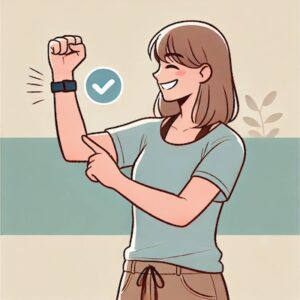Article by John Miller
What Causes Arm Pain?


Arm pain can arise from various factors, including sports injuries, work-related incidents, and repetitive overuse. Understanding the underlying cause is crucial for effective treatment. The causes of arm pain can be broadly categorised by region and structure, such as neck pain, shoulder pain, elbow pain, wrist pain, hand pain, arthritis, bursitis, ligament injury, muscle pain, tendinopathy, and more. It can stem from a local injury, musculoskeletal issue, or even referred from nerves in your neck.
Common Causes of Arm Pain
Shoulder Pain
Common shoulder issues include rotator cuff injuries or frozen shoulder. These conditions often result in significant discomfort and restricted movement. Shoulder pain can severely impact your daily activities, making it difficult to perform simple tasks.
Elbow Pain
Elbow pain is frequently caused by conditions such as tennis elbow or golfer’s elbow. These conditions are typically due to repetitive motions and overuse, leading to inflammation and pain in the tendons around the elbow joint.
Wrist and Hand Pain
Wrist and hand pain can be associated with carpal tunnel syndrome, wrist arthritis, or de Quervain’s tenosynovitis. These conditions can cause numbness, tingling, and weakness in the hands, affecting your ability to grip objects.
Importance of Professional Assessment and Prompt Treatment
Seeking professional assessment and prompt treatment for arm pain is essential. A skilled health practitioner can provide an accurate diagnosis and tailor a treatment plan to address the specific source of your arm pain. Early intervention can significantly improve outcomes and prevent further complications.
Arm pain, especially on the left side, can sometimes indicate a more serious condition, such as a cardiac issue. Therefore, it is vital to seek immediate medical attention if you experience sudden or severe left-arm pain.
Causes of Arm Pain by Region
Neck Pain
- Cervical Radiculopathy: A condition where a nerve in the neck becomes compressed or irritated, leading to pain radiating down the arm.
- Pinched Nerve: Compression of a nerve in the neck can cause arm pain and numbness.
Shoulder Pain
- Rotator Cuff Injuries: These involve damage to the muscles and tendons that stabilize the shoulder joint.
- Frozen Shoulder: Characterised by stiffness and pain in the shoulder joint, making movement difficult.
Elbow Pain
- Tennis Elbow: Inflammation of the tendons on the outer side of the elbow.
- Golfer’s Elbow: Inflammation of the tendons on the inner side of the elbow.
Wrist Pain
- Carpal Tunnel Syndrome: Compression of the median nerve within the wrist, leading to pain and numbness in the hand.
- Wrist Arthritis: Degeneration of the joints in the wrist causing pain and stiffness.
Hand Pain
- Finger Sprain: Stretching or tearing of the ligaments in the fingers.
- Hand Arthritis: Inflammation of the joints in the hand, leading to pain and reduced function.
Causes of Arm Pain by Structure
Arthritis
Arthritis is inflammation of the joints, causing pain and stiffness.
Bursitis
Bursitis is inflammation of the bursa, a fluid-filled sac that reduces friction between tissues.
Ligament Injury
Injury to the ligaments, which connect bones and provide stability to joints.
Muscle Pain
Pain originating from muscles due to overuse, strain, or injury.
Tendinopathy
Disorders of the tendons, including tendinitis (inflammation) and tendinosis (degeneration).
What to Do?
If you experience arm pain, it is crucial to seek professional advice from a physiotherapist or doctor. Early diagnosis and treatment can prevent complications and promote a quicker recovery. Physiotherapists can offer various treatments, including manual therapy, exercises, and advice on lifestyle modifications to alleviate pain and improve function.
Conclusion
Arm pain can have many causes, ranging from injuries to underlying health conditions. Seeking professional assessment and treatment is vital to managing pain effectively and preventing further issues. Don't ignore persistent arm pain; consult your physiotherapist or doctor for a tailored treatment plan.
Rochedale - Call 38410277
Book Online: RochedaleSalisbury - Call 32751044
Book Online: SalisburySandgate - Call 32691122
Book Online: SandgateArm Pain FAQs
1. What are the common causes of arm pain? Common causes include shoulder injuries, elbow conditions like tennis elbow, and wrist issues such as carpal tunnel syndrome.
2. When should I see a physiotherapist for arm pain? Seek professional help if you experience persistent or severe arm pain, especially if it affects your daily activities.
3. Can arm pain be a sign of a serious condition? Yes, left-arm pain can sometimes indicate a cardiac issue. Seek immediate medical attention if you experience sudden or severe left-arm pain.
4. How is arm pain diagnosed? A physiotherapist will assess your symptoms, medical history, and may perform physical tests to diagnose the cause of your arm pain.
5. What treatments are available for arm pain? Treatments can include manual therapy, exercises, and advice on modifications to daily activities to reduce pain and improve function.
6. Can lifestyle changes help reduce arm pain? Yes, modifying activities that strain the arm, using ergonomic tools, and incorporating regular exercise can help manage and reduce arm pain.
Related Articles
- Shoulder Pain: Causes and Treatments - Explore various causes and treatments for shoulder pain.
- Tennis Elbow: Symptoms and Management - Learn about symptoms and effective management strategies for tennis elbow.
- Carpal Tunnel Syndrome: Diagnosis and Therapy - Discover how carpal tunnel syndrome is diagnosed and treated.
- Frozen Shoulder: Understanding and Treatment Options - Find out more about frozen shoulder and its treatment.
- Cervical Radiculopathy: Causes and Relief - Understand the causes of cervical radiculopathy and relief options.
- Wrist Arthritis: Symptoms and Solutions - Learn about the symptoms and solutions for wrist arthritis.
- Rotator Cuff Injuries: Prevention and Care - Explore prevention and care strategies for rotator cuff injuries.
- Golfer’s Elbow: Recognising and Managing - Understand how to recognise and manage golfer’s elbow.
- Thoracic Outlet Syndrome: Symptoms and Treatment - Discover symptoms and treatment options for thoracic outlet syndrome.
- Hand Arthritis: Managing Pain and Stiffness - Find out how to manage pain and stiffness caused by hand arthritis.
- Causes of Arm Pain - WebMD discusses various causes of arm pain and when to seek medical attention.
- Arm Pain: Causes, Diagnosis, and Treatment - Healthline provides a comprehensive overview of arm pain, including causes and treatment options.
- Arm Pain: When to See a Doctor - Mayo Clinic explains when arm pain might indicate a more serious condition and when to seek medical care.









